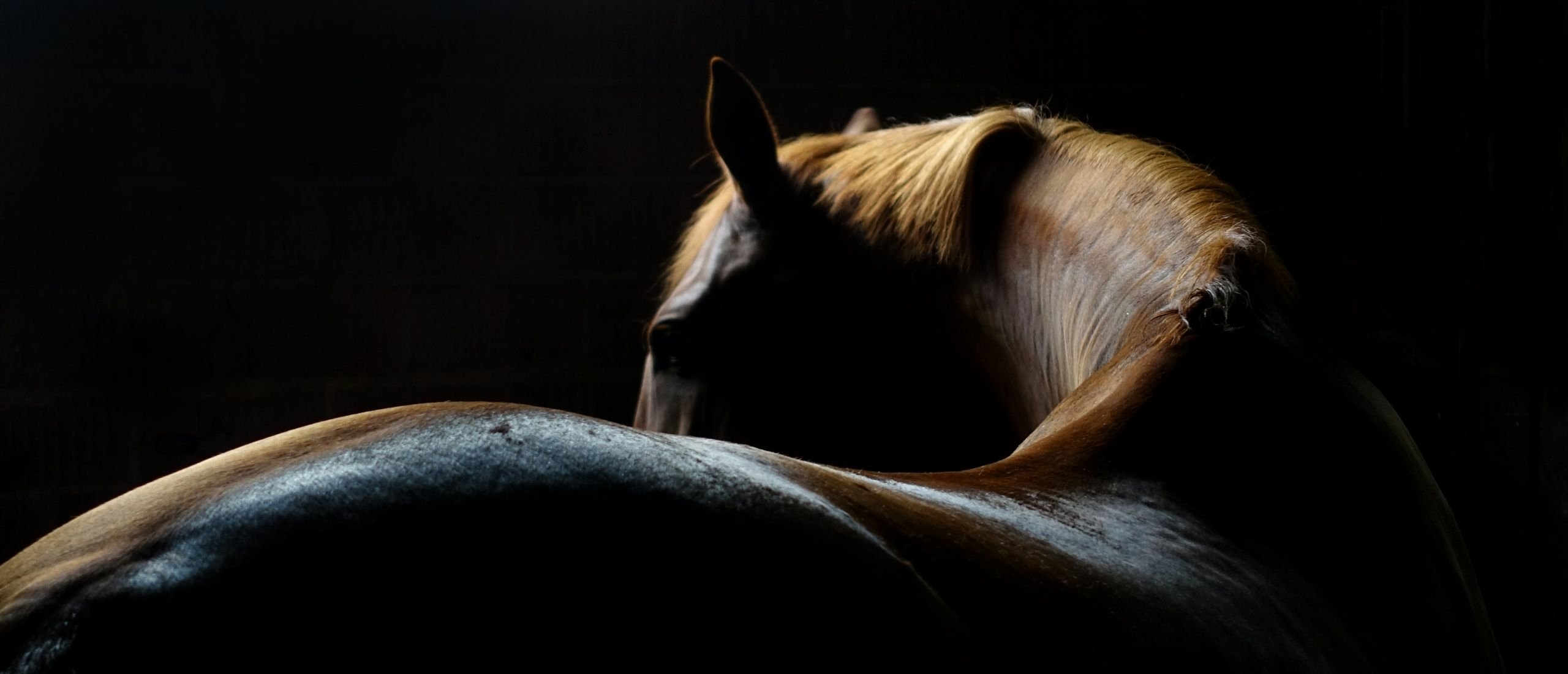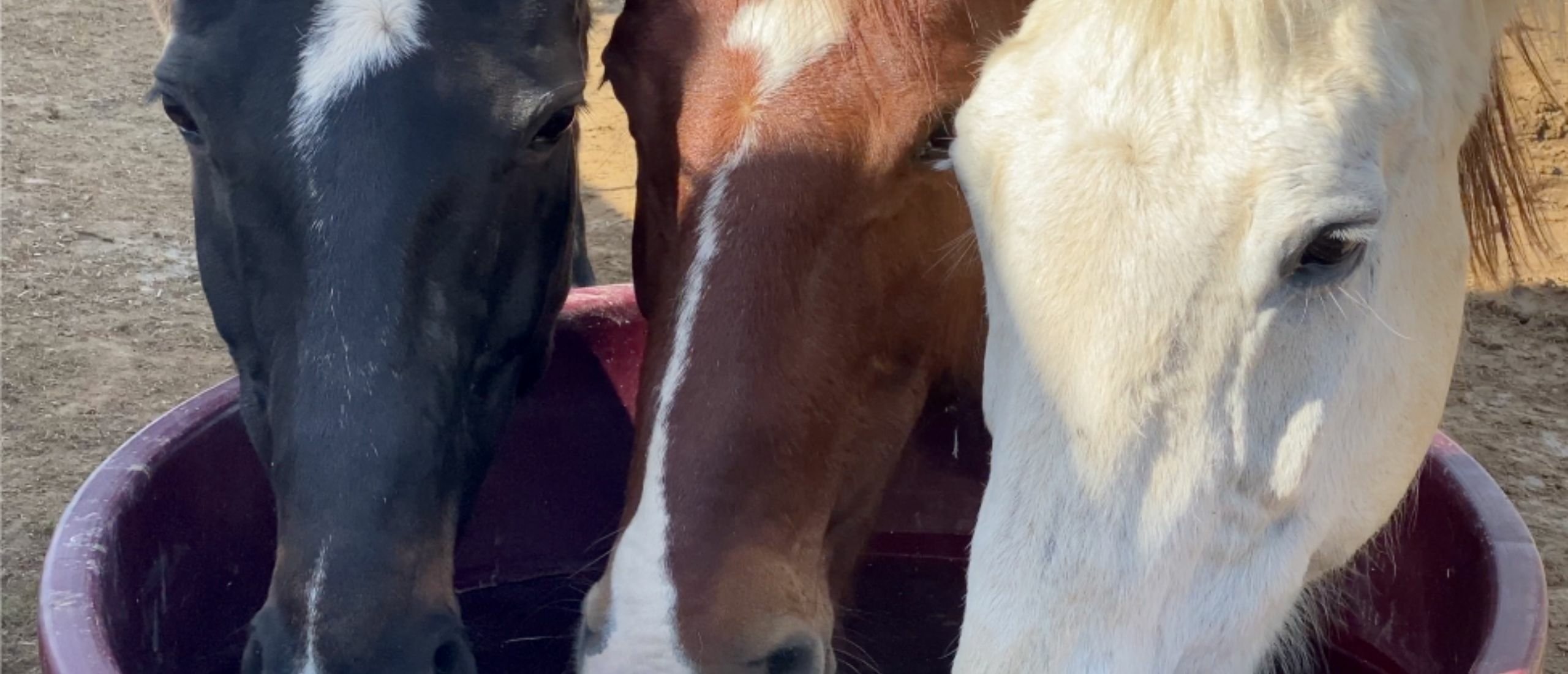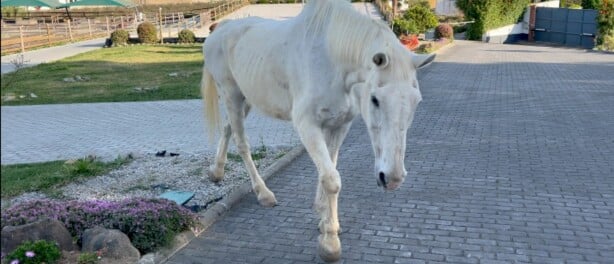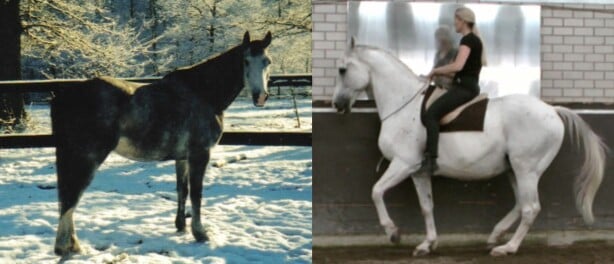A picture says more than thousands of words, and that's so true.
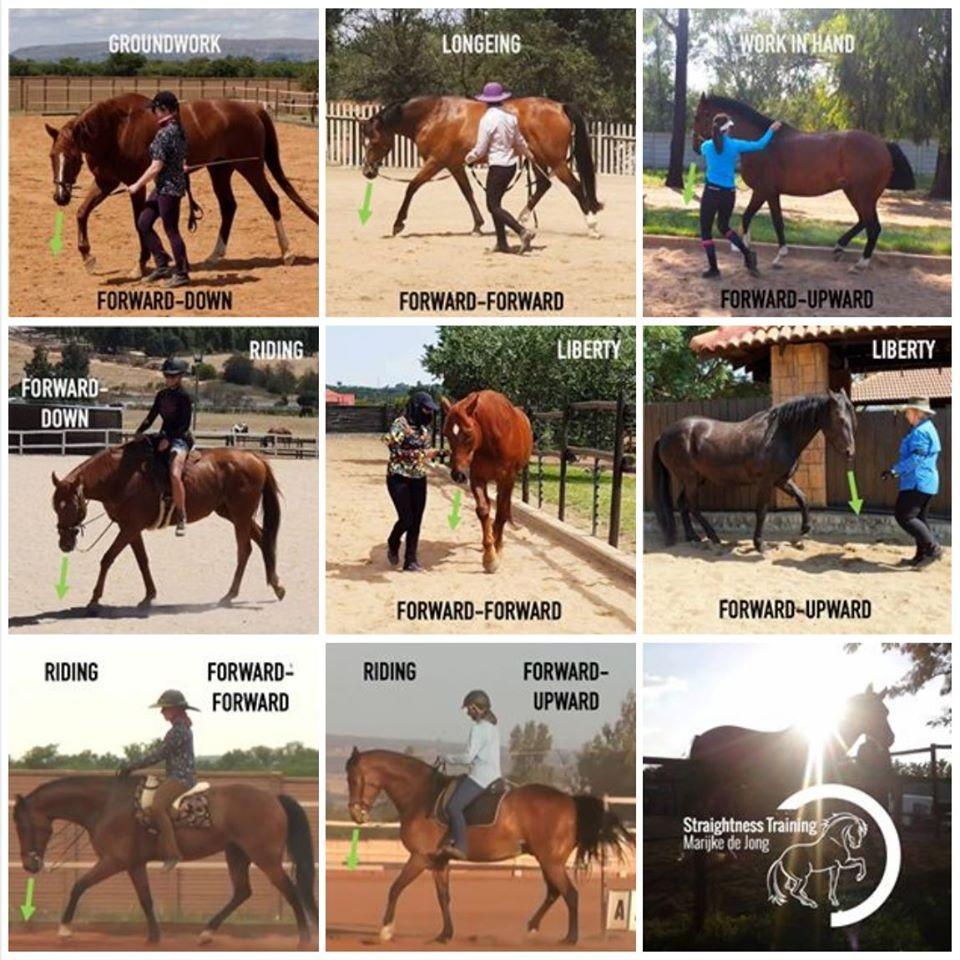
There's so much to tell about this picture - which I did in 12 Mastery Modules in the ST Academy - and it's impossible to repeat all 12 modules here, so what I'd like to say about the picture, is that it's a map of the territory.
Like you have a map of Japan: the map is not Japan but it helps to understand Japan and navigate through Japan so you arrive where you want to be.
So in Straightness Training, we use a lot of maps, concepts, frameworks, and models to explain things that happen in our territory - and we even use frameworks within frameworks or combine a certain set of concepts.
And all these frameworks and concepts are not designed for our horse, but for us to help us understand the way our horse thinks, feels, and behaves, so we are able to close the gap where we are and where we want to be and can achieve the results we're looking for.
For example, in this picture, several frameworks shine through:
Framework of the 5 Training Pillars
 First of all, the framework of the five training pillars is visible. In Straightness Training (ST), we use five training pillars to rebalance our horse:
First of all, the framework of the five training pillars is visible. In Straightness Training (ST), we use five training pillars to rebalance our horse:
- Groundwork
- Longeing
- Work in hand
- Riding
- Liberty
Every pillar adds a different dimension to the process and all pillars strengthen each other, which results in that the whole is greater than the sum of its parts.
The Framework "LFS"
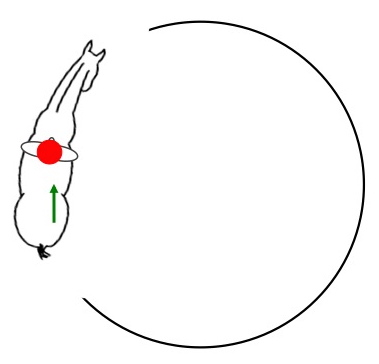 Then, in all pillars, we develop a proper LFS first, which are the first 3 keys of ST - which is another framework:
Then, in all pillars, we develop a proper LFS first, which are the first 3 keys of ST - which is another framework:
- L・ateral bending in the body
- F・orward-down tendency of the head and neck
- S・tepping under the center of mass of the inside hind leg
The Concept of Forward-Down
When it comes to the concept of forward-down, there's also a framework within this framework.
We strive to transition from forward-down to more forward-forward, and finally to forward-upward, to help our horse shift the weight more backward to free the fragile front legs.
You see, working our horse in forward-down is a sort of "necessary evil":
- "necessary" because we need relaxation in body and mind as a fundament for our entire training.
- "evil" because it easily shifts the weight towards the front legs if we don't keep an eye on the two-way street (which is another concept where we shift the center of mass in one direction and lengthen the neck in the other direction).

So as soon there's relaxation, we start to work towards more forward-forward, with 50-50 balance and the weight evenly spread on all four legs. And then gradually we transition to forward-upward where our horse moves a sort of "uphill" in front while "sitting" in behind.
The Idea of the "Search"
Then we use another concept to keep the "search" in all positions, because when our horse "searches towards our hand" this makes sure our horse stretches his topline and moves in a connected and engaged way.
Now to get to a constant search we use the so-called "ask-yield-give-search (a-y-g-s)" process which goes like this:
- We ASK and invite the head and neck in and down.
- Our horse YIELDS to this request.
- We GIVE and release by opening our hand, and
- Allow our horse to SEARCH direction down with the nose.
We consider this "search" (the green arrow on the pictures) as one of the most important things to preserve all the way up to the highest levels.

Isolate - Integrate - Improvise
In ST, we first learn the entire series of frameworks in isolation, then we start to integrate them, and finally, we can use them when needed in an improvising way - and that's another framework we use in ST:
- Isolate
- Integrate
- Improvise
But let's stop here after 600+ words... and let's wrap this up with the awareness that the "idea" of something and the "experience" of something are two very different things.
Idea vs Experience
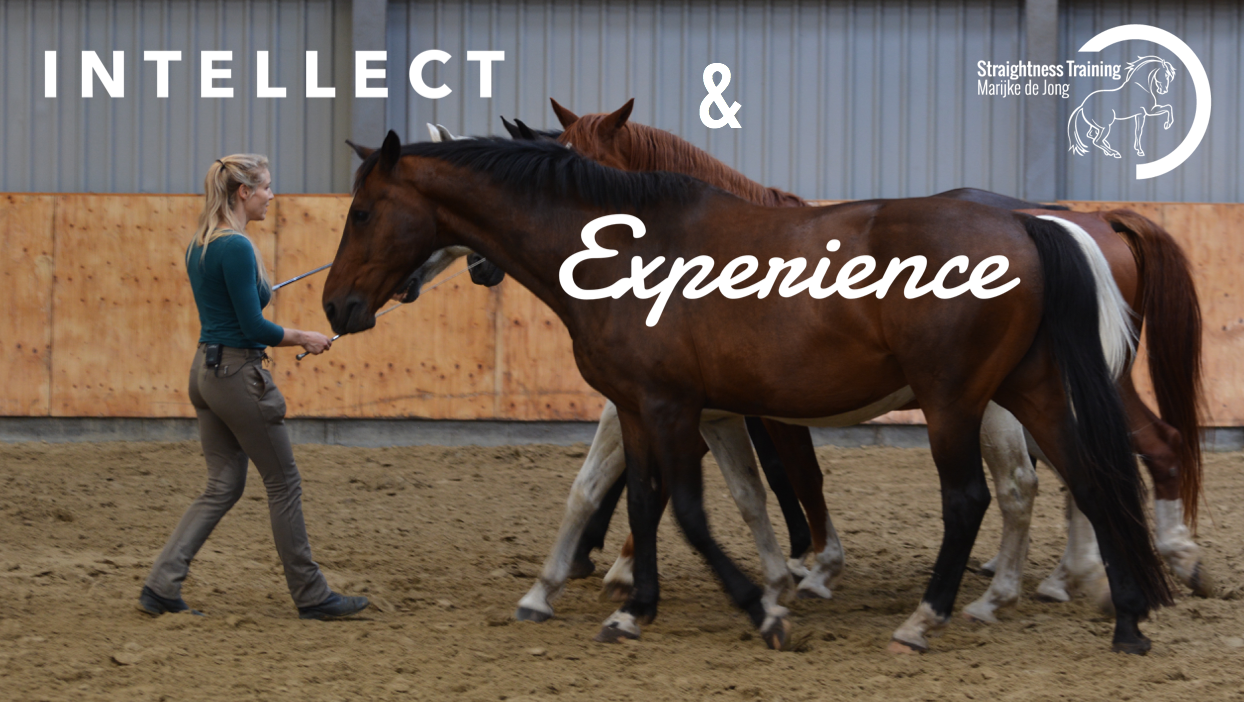 There is a BIG difference between knowing Straightness Training intellectually and knowing it as an experience.
There is a BIG difference between knowing Straightness Training intellectually and knowing it as an experience.
It's the difference between "cognitive" mastery and "emotional & physical" mastery.
Words are no replacement for the experience, and this can be quite frustrating sometimes for the intellectual and rational mind that wants to understand, and explain, and analyze everything.
However, we cannot ONLY do ST intellectually, that means in an intellectual, logical, conceptual, rational, analytical, outside-in way.
 We also need to do ST experientially and tap into our intuition, our intelligence, our unconscious, and experience ST from the inside-out in our own laboratory.
We also need to do ST experientially and tap into our intuition, our intelligence, our unconscious, and experience ST from the inside-out in our own laboratory.
ST gives us the concepts, but we have to fill in the details.
So it's great to see Mastery STudents experimenting in their ST lab figuring out how these frameworks work in practice.
To see how they are becoming aware of the subtle stuff, filling in the 2mm, trusting their ability to come up with original solutions.
It's wonderful to see their ability to create long-lasting balance in their horse's body, mind, heart, and soul - understanding ST in a way that echoes on a deep core level!
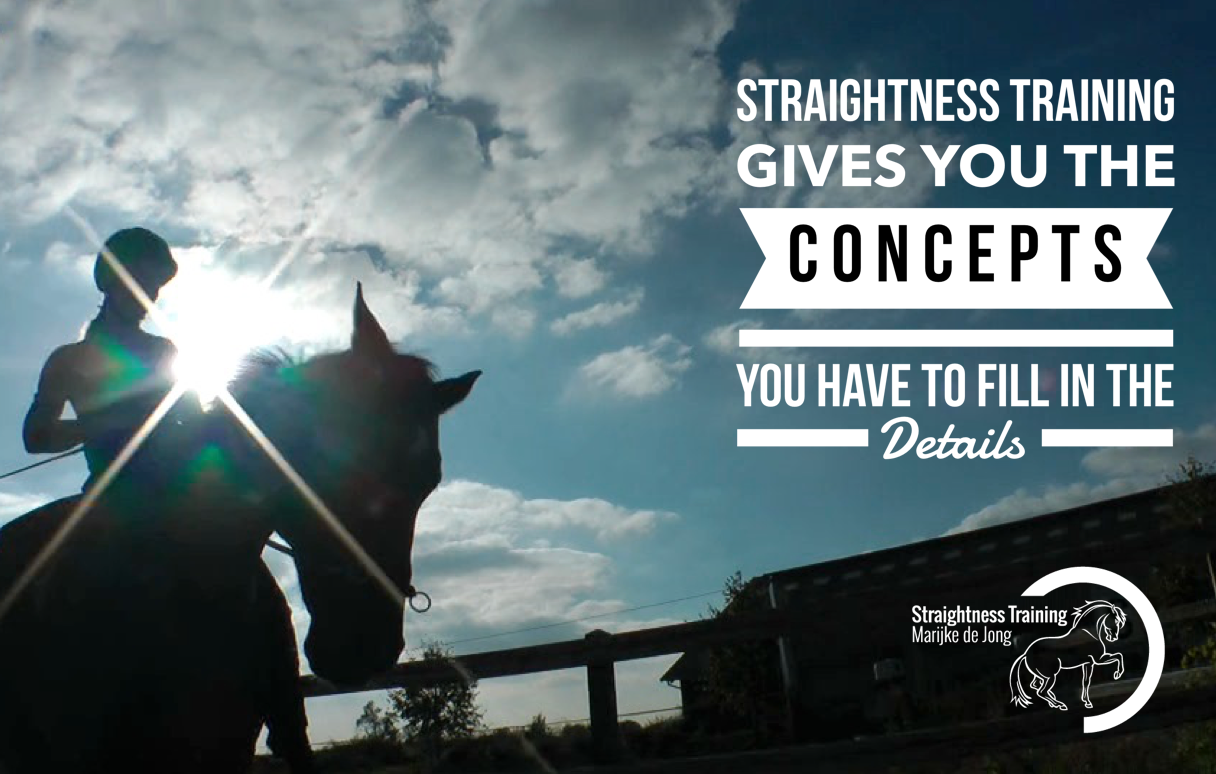
Links To Related and Recommended Articles
- Knowing Straightness Training Intellectually vs Experientially »
- The Map Is Not The Territory »
- Be a Researcher In Your Lab »
- ST Gives You The Concepts, You Have To Fill In The Details »
- 2mm - The Devil Is In The Detail »

